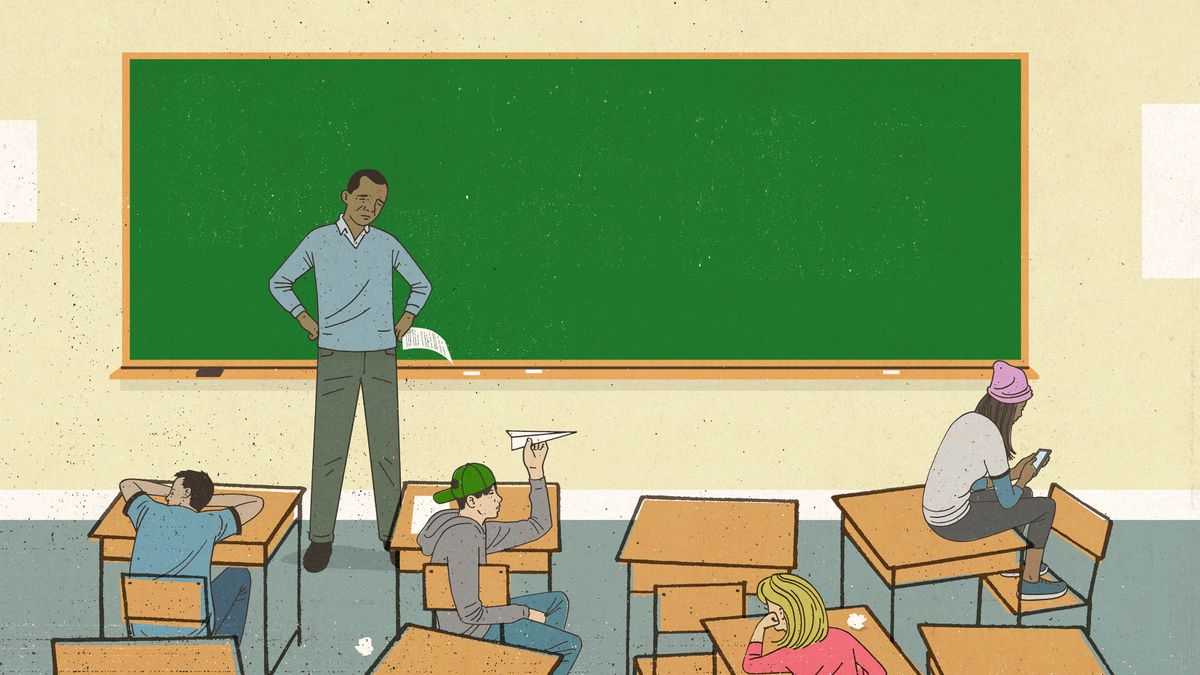Sometimes in teaching you have the right idea but — at first — the wrong way to go about it. That’s what happened to Vadim Keyser, an assistant professor of philosophy at California State University at Fresno.
Several years ago, Keyser was teaching an upper-division philosophy-of-science course, and wrestling with the idea of engagement in online courses. Specifically, how could he help his students, who were both science and nonscience majors, better understand the complex concepts he was teaching?
At first, says Keyser, who was then working at Cal State at Sacramento, he thought the best way might be to use his background in art and animation to create catchy videos: some animated, some in the clever style of Bill Nye. So, with the help of a grant, he created an experiment that he could run in different sections of his course.
But when test scores came back from his 200 or so students, he didn’t see any difference between those who had been given his creative tools and those who hadn't. That was puzzling to Keyser, who had been sure that “making cool stuff” was the way to better understand tricky scientific concepts.
Around the same time, he was also teaching a course in the honors college, on civic engagement and service learning. Those students worked on a large sculpture project for the community. It was “massively exciting” to the students, recalls Keyser.
After that first failed experiment, in 2013-14, and with the honors-college experience under his belt, Keyser had a small epiphany: Maybe his students, not he, should be the ones making things.
So he tried the experiment again, in 2015. Except this time, he asked students to work in groups and make something that visualized a concept they were learning. It could be a film, a conference presentation, or a graphic novel. It didn’t need to be sophisticated or high-tech. What mattered, he says, is that they worked together to analyze scientific information and visually represent it in a way that demonstrated their understanding.
When he tested his students, the scores among those who had created videos and visualizations were about 25 percent higher than those who had done traditional note-taking summaries. While it was a small experiment and a single test, Keyser says, it changed how he engages students in an online course.
“My initial thinking was that engagement was about exposure to information,” he says. “Then it changed to engagement is about teaching students how to navigate information.”
Keyser is now working with another grant to continue exploring the idea of engagement through technology, teaming up with other professors on a service-learning project that will incorporate, he says, applied science, visualization, and community service. The details are still being worked out for the fall, but he hopes that students in this online course can create virtual solutions to some community problems, generating the kind of excitement he saw among his philosophy-of-science students and in his earlier service-learning course.
Now that so many courses have shifted online, Keyser says he’s been encouraging other professors to think about student engagement in different ways. In online learning, he says, instructors sometimes fall into the trap of thinking that more is better: more TED talks, more videos, and so on. “We think, OK, this is good, you’re hitting information at all angles,” he says. “But in reality, their attention becomes overwhelmed.” That’s particularly important now, he notes, when students are already feeling overloaded, as they grapple with the pandemic and political protests.
Have you designed assignments in which you ask your students to come up with creative ways to explain the concepts they have learned in your course, and do you plan to continue those assignments in an online environment? If so, write to me, at beth.mcmurtrie@chronicle.com, and your story may appear in a future newsletter.
More Resources for Teaching in Hybrid, Distanced, and Online Classrooms
- Jenny Baumgartner, an associate professor in the School of Education at Louisiana State University at Baton Rouge, wrote to share a crowdsourced document describing active-learning practices that can be done in physically distanced environments, including online and hybrid classrooms. You can find it here.
- Deb Adair, executive director of Quality Matters, wrote to share a popular webinar by Wendy Tietz, an accounting professor at Kent State University, explaining the “whys and hows” of running a Hyflex classroom.
- More tips on teaching can be found on Today’s Learner, Cengage’s “vendor neutral” blog, including how to plan courses in a Hyflex model and an online model.

























